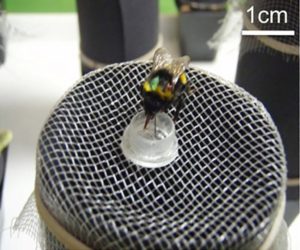 Hosts: Vincent Racaniello, Dickson Despommier, Alan Dove, and Rich Condit
Hosts: Vincent Racaniello, Dickson Despommier, Alan Dove, and Rich Condit
Polio returns to Nigeria, Zika virus spreads in Miami, and virus infection of plants attracts bumblebees for pollination, from the virus gentlepeople at TWiV.
Click arrow to play
Download TWiV 402 (85 MB .mp3, 118 min)
Subscribe (free): iTunes, RSS, email
Become a patron of TWiV!
Links for this episode
- Marian Horzinek, 80 (ProMedMail) 17:40
- Polio in Nigeria (Atlantic, Stat, ProMedMail) 20:40
- Zika virus spreads in Miami (NYTimes) 28:35
- More Zika virus vaccines (Science) 29:55
- Back to work on Zika, Congress! (Asbury Park Press) 38:20
- Lack of funding will stymie Zika vaccines (Wash Examiner) 38:45
- FDA OK on genetically modified mosquitoes (FDA) 40:20
- CMV attracts aphid vectors (TWiV #70) 45:55
- CMV attracts pollinating bumblebees (PLoS Path) 44:10
- Earth dwarfed by solar flare (jpg)
- Letters read on TWiV 402 5:00, 1:18:55
This episode is brought to you by CuriosityStream, a subscription streaming service that offers over 1,400 documentaries and nonfiction series from the world’s best filmmakers. Get unlimited access starting at just $2.99 a month, and for our audience, the first two months are completel free if you sign up at curiositystream.com/microbe and use the promo code MICROBE. 0:25, 41:50
This episode is also brought to you by Drobo, a family of safe, expandable, yet simple to use storage arrays. Drobos are designed to protect your important data forever. Visit www.drobo.com to learn more. Listeners can save $100 on a Drobo system at drobostore.com by using the discount code Microbe100. 0:50, 1:41:10
Weekly Science Picks 1:37:20
Alan – Solar storm that launched US space weather science
Rich – Data storage on DNA
Dickson – Perseid meteor show live
Vincent – In the Company of Microbes by Elio Schaechter
Listener Picks
Neva – I Contain Multitudes by Ed Yong
Amanda – American Gut
Send your virology questions and comments to [email protected]


Can bees visually see a difference between the sucrose and quinine solutions because quinine fluoresces whereas sucrose does not. Insects generally have better vision in the UV part of the spectrum so if bees can see the solutions they may be able to differentiate visually.
This is Simon “Niels” Groen, one of the paper’s authors. Thanks for your question and your interest in our paper! One of the other co-authors, Heather Whitney, has previously found that in our experimental setup bees cannot distinguish between sucrose and quinine by means other than contact chemoreception. This was published in the following paper in the journal Naturwissenschaften in 2008: “The interaction of temperature and sucrose concentration on foraging preferences in bumblebees” (link: https://scholar.google.com/citations?view_op=view_citation&hl=en&user=jAhtMlwAAAAJ&citation_for_view=jAhtMlwAAAAJ:zYLM7Y9cAGgC). As part of the experiments for our current paper we have done two control trials (Figure 3F and 3L) and found that bumble bees could not learn to distinguish between the odours of two treatment groups when the plants in these treatment groups were identical (Figure 3L) or near-identical (Figure 3F). Although insects do generally indeed have a better vision in the UV part of the spectrum, these results rule out that any visual properties of quinine and sucrose could have affected our results in the experimental setup that we used.
Many thanks for your reply and the link to the paper in Naturwissenschaften. This is a very interesting piece of work as was your paper discussed on TWIV 402. I only discovered TWIV by accident relatively recently but I am already addicted. I expect there are probably examples of other viruses (or other microbes) that modify their hosts biochemistry in order to attract insects or other vectors to assist in their transmission to a fresh host out there waiting to be discovered, It would perhaps be interesting to see if the altered volatiles given off by the CMV infected plants induce any physiological or biochemical responses in nearby plants. Some plant pathogens induce the generation of volatile compounds which alert nearby plants to the presence of the pathogen and results in these uninfected plants producing defensive metabolites to protect against infection. Anyway an interesting and stimulating paper
Regards Paul